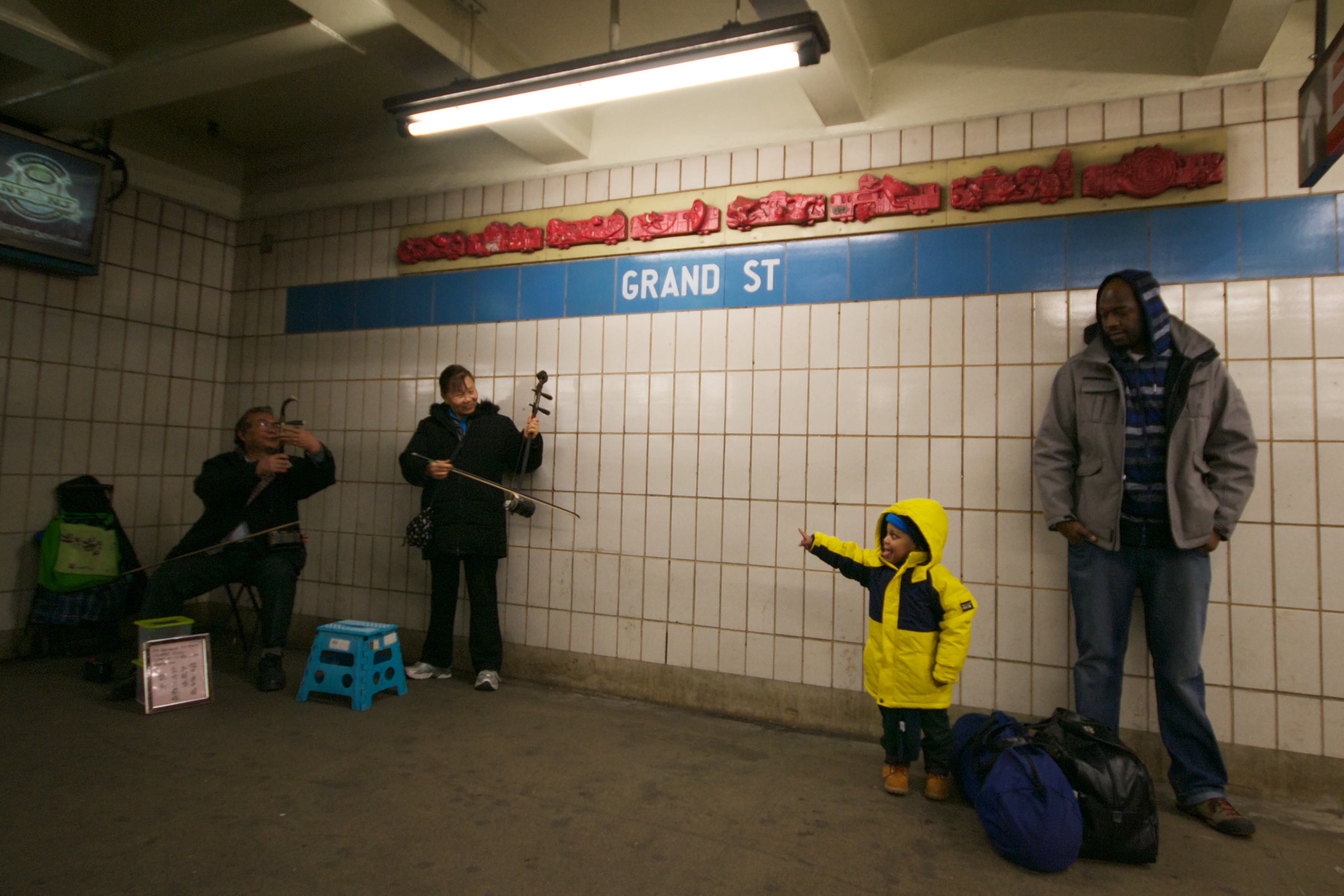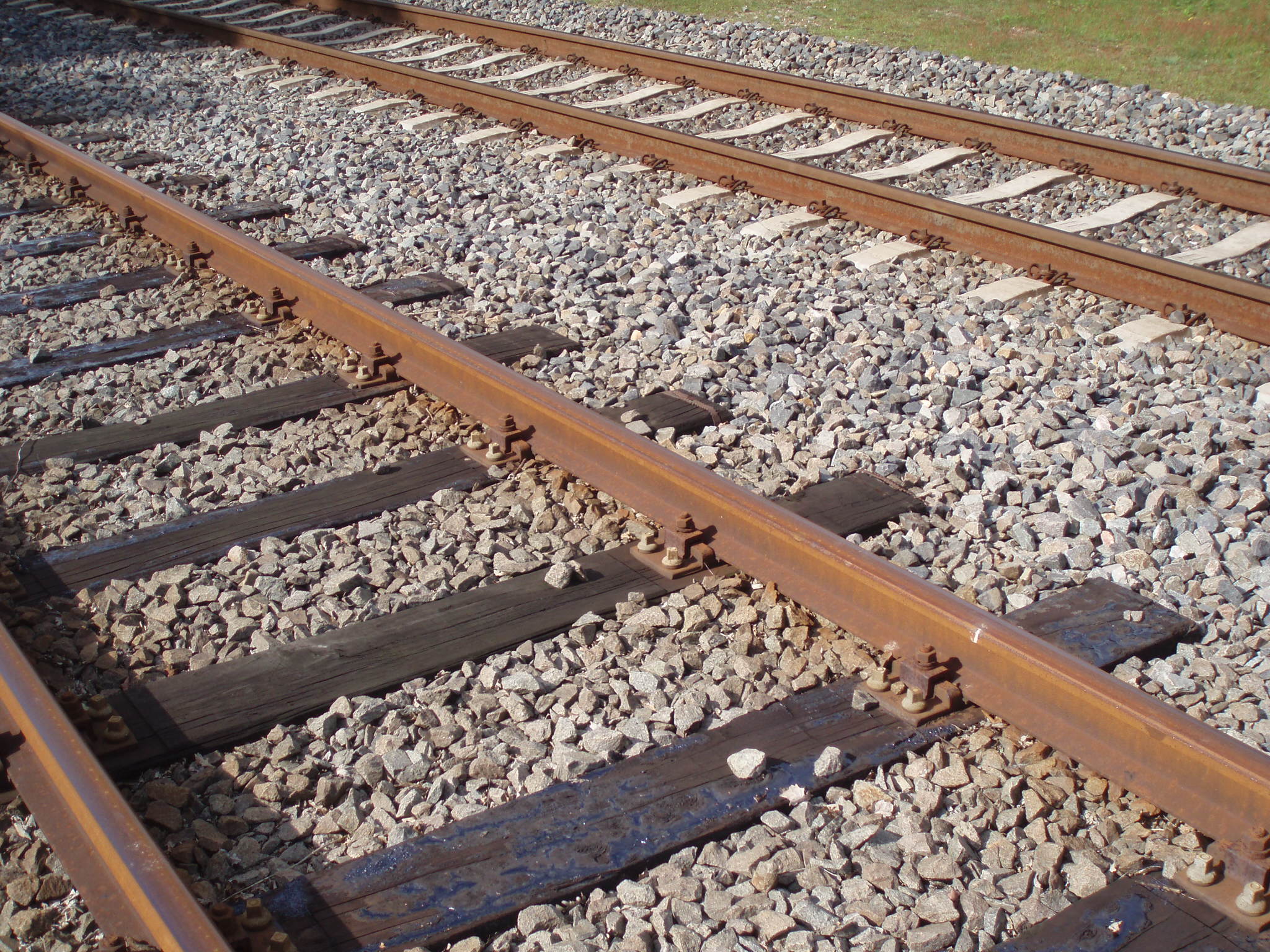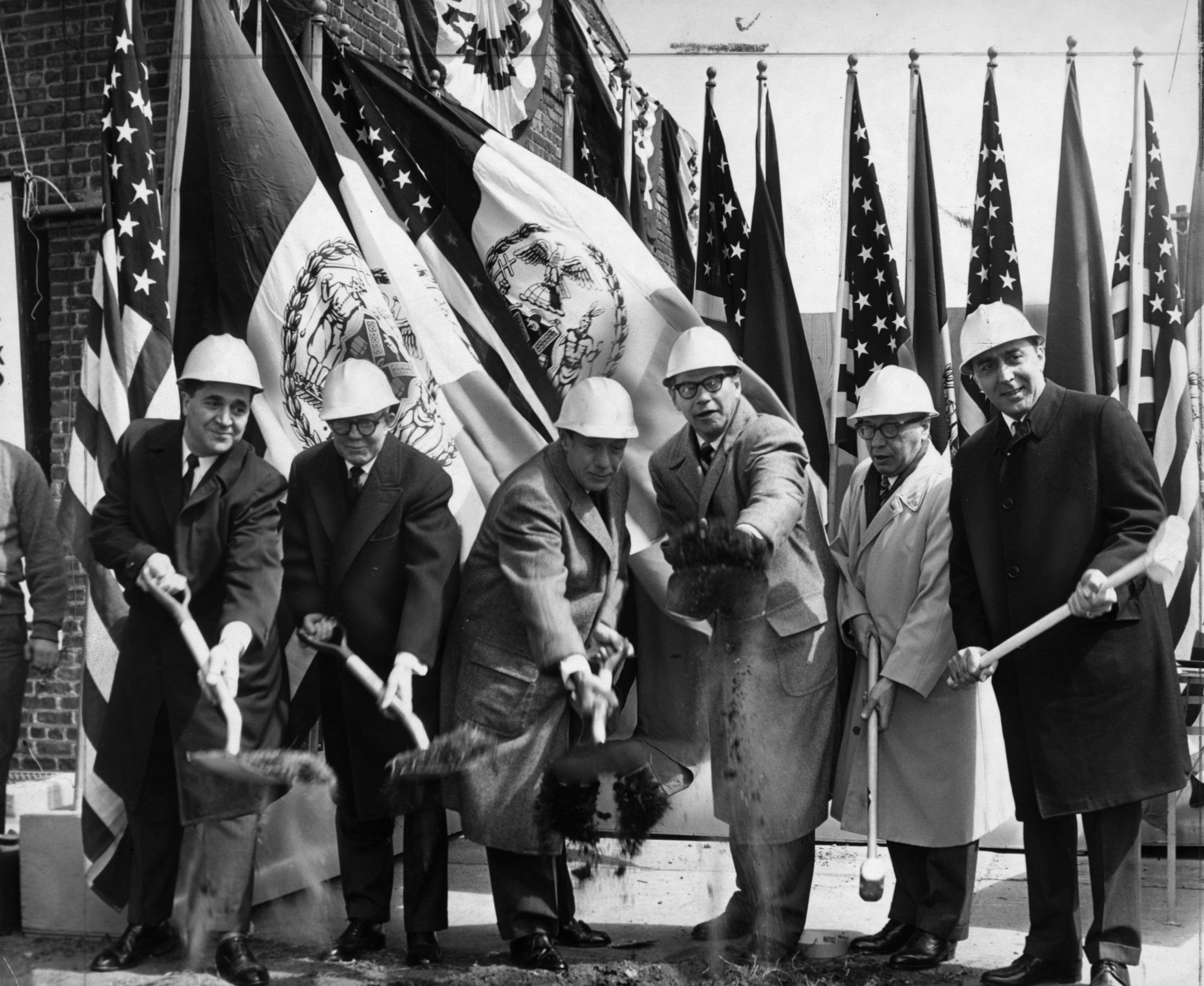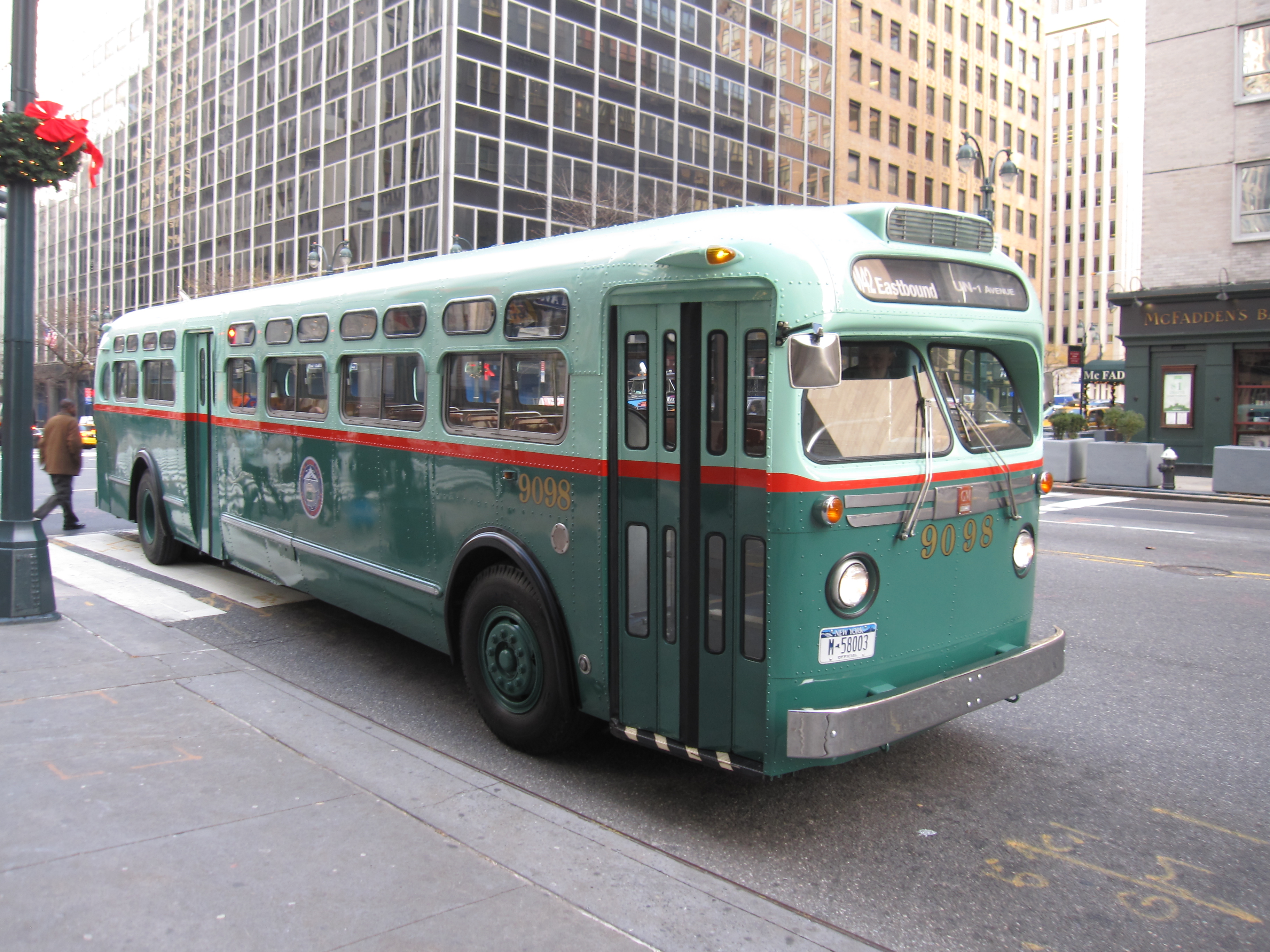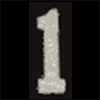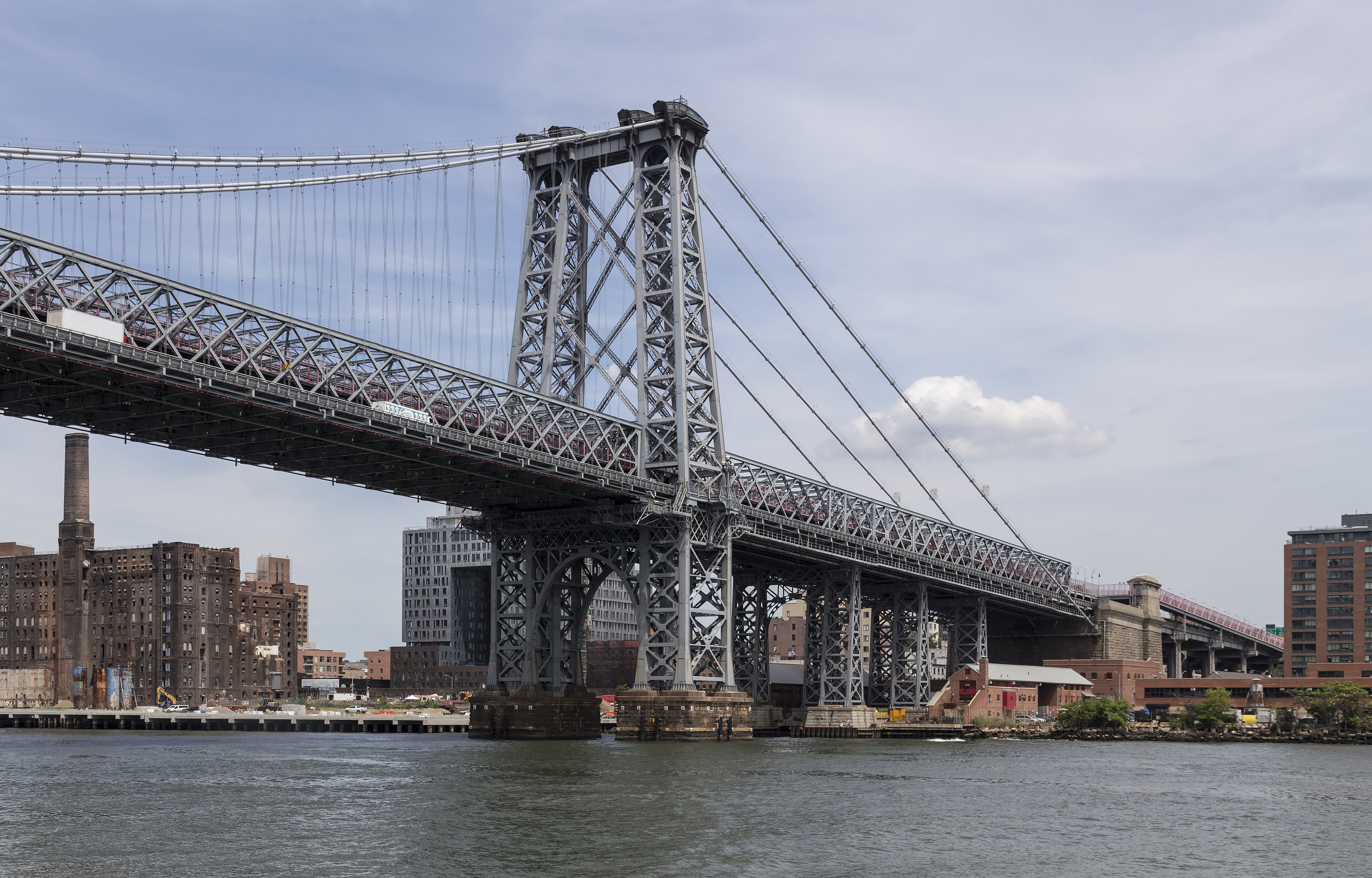|
Grand Street (IND Sixth Avenue Line)
The Grand Street station is an express station on the IND Sixth Avenue Line of the New York City Subway. Located at the intersection of Grand Street and Chrystie Street at the border of Chinatown and the Lower East Side, it is served by the D train at all times and the B train on weekdays. Opened on November 26, 1967, this station was one of two added as part of the Chrystie Street Connection. The station has two tracks and two narrow side platforms, located approximately below ground. In the original plan for the station, this would have been a four-track, two-island platform station, with a transfer to the Second Avenue Subway. The fourth phase of the Second Avenue Subway, if built, would include new platform(s) with connections to the existing platforms. History Construction The station was built as part of the Chrystie Street Connection between the Sixth Avenue Line and the Manhattan and Williamsburg Bridges. The Chrystie Street Connection was first proposed in 1 ... [...More Info...] [...Related Items...] OR: [Wikipedia] [Google] [Baidu] |
R68A (New York City Subway Car)
The R68A is a B Division New York City Subway car order consisting of 200 cars built between 1988 and 1989 by Kawasaki Railcar Company in Kobe, Japan, with final assembly done at the Kawasaki plant in Yonkers, New York Yonkers () is the List of municipalities in New York, third-most populous city in the U.S. state of New York (state), New York and the most-populous City (New York), city in Westchester County, New York, Westchester County. A centrally locate .... A total of 200 cars were built, arranged in four-car sets. The R68A was the fourth and final R-type contract to be built with cars (the previous three being the R44 (New York City Subway car), R44, R46 (New York City Subway car), R46, and R68 (New York City Subway car), R68). The contract had been given to Kawasaki because the manufacturers of the base R68 order, the joint venture Westinghouse-Amrail Company, had experienced significant integration issues that led to performance problems with the R68s. The firs ... [...More Info...] [...Related Items...] OR: [Wikipedia] [Google] [Baidu] |
Island Platform
An island platform (also center platform (American English) or centre platform (British English)) is a station layout arrangement where a single platform is positioned between two tracks within a railway station, tram stop or transitway interchange. Island platforms are sometimes used between the opposite-direction tracks on twin-track route stations as they are cheaper and occupy less area than other arrangements. They are also useful within larger stations, where local and express services for the same direction of travel can be accessed from opposite sides of the same platform instead of side platforms on either side of the tracks, simplifying and speeding transfers between the two tracks. The historical use of island platforms depends greatly upon the location. In the United Kingdom the use of island platforms on twin-track routes is relatively common when the railway line is in a cutting or raised on an embankment, as this makes it easier to provide access to the platf ... [...More Info...] [...Related Items...] OR: [Wikipedia] [Google] [Baidu] |
Railroad Tie
A railroad tie, crosstie (American English), railway tie (Canadian English) or railway sleeper ( Australian and British English) is a rectangular support for the rails in railroad tracks. Generally laid perpendicular to the rails, ties transfer loads to the track ballast and subgrade, hold the rails upright and keep them spaced to the correct gauge. Railroad ties are traditionally made of wood, but prestressed concrete is now also widely used, especially in Europe and Asia. Steel ties are common on secondary lines in the UK; plastic composite ties are also employed, although far less than wood or concrete. As of January 2008, the approximate market share in North America for traditional and wood ties was 91.5%, the remainder being concrete, steel, azobé (red ironwood) and plastic composite. Tie spacing may depend on the type of tie, traffic loads and other requirements, for example on North American mainline railroads to on London, Midland and Scottish Railway joi ... [...More Info...] [...Related Items...] OR: [Wikipedia] [Google] [Baidu] |
The New York Times
''The New York Times'' (''NYT'') is an American daily newspaper based in New York City. ''The New York Times'' covers domestic, national, and international news, and publishes opinion pieces, investigative reports, and reviews. As one of the longest-running newspapers in the United States, the ''Times'' serves as one of the country's Newspaper of record, newspapers of record. , ''The New York Times'' had 9.13 million total and 8.83 million online subscribers, both by significant margins the List of newspapers in the United States, highest numbers for any newspaper in the United States; the total also included 296,330 print subscribers, making the ''Times'' the second-largest newspaper by print circulation in the United States, following ''The Wall Street Journal'', also based in New York City. ''The New York Times'' is published by the New York Times Company; since 1896, the company has been chaired by the Ochs-Sulzberger family, whose current chairman and the paper's publ ... [...More Info...] [...Related Items...] OR: [Wikipedia] [Google] [Baidu] |
Groundbreaking
Groundbreaking, also known as cutting, sod-cutting, turning the first sod, turf-cutting, or a sod-turning ceremony, is a traditional ceremony in many cultures that celebrates the first day of construction for a building or other project. Such ceremonies are often attended by dignitaries such as politicians and businesspeople. The shovel used during the groundbreaking is often a special ceremonial shovel, sometimes colored gold, meant to be saved for subsequent display and may be engraved. In other groundbreaking ceremonies, a bulldozer is used instead of a shovel to mark the first day of construction. In some groundbreaking ceremonies, the shovel and the bulldozer mark the first day of construction. In other places, this ceremony can be replaced by a "laying of the first stone" event. Meaning When used as an adjective, the term ''groundbreaking'' may mean being or making something that has never been done, seen, or made before, "stylistically innovative works". History Groun ... [...More Info...] [...Related Items...] OR: [Wikipedia] [Google] [Baidu] |
New York City Transit Authority
The New York City Transit Authority (also known as NYCTA, the TA, or simply Transit, and branded as MTA New York City Transit) is a New York state public-benefit corporations, public-benefit corporation in the U.S. state of New York (state), New York that operates public transportation in New York City. Part of the Metropolitan Transportation Authority, the busiest and largest transit system in North America, the NYCTA has a daily ridership of 8million trips (over 2.5billion annually). The NYCTA operates the following systems: * New York City Subway, a rapid transit system serving Manhattan, the Bronx, Brooklyn, and Queens * Staten Island Railway, a rapid transit line on Staten Island (operated by the subsidiary Staten Island Rapid Transit Operating Authority) * New York City Bus, an extensive bus network serving all five boroughs (operated by the subsidiary MTA Regional Bus Operations) Name As part of establishing a common corporate identity, the Metropolitan Transportation Aut ... [...More Info...] [...Related Items...] OR: [Wikipedia] [Google] [Baidu] |
New York City Board Of Transportation
The New York City Board of Transportation or the Board of Transportation of the City of New York (NYCBOT or BOT) was a city transit commission and operator in New York City, consisting of three members appointed by the Mayor of New York City, mayor. It was created in 1924 to control city-owned and operated public transportation service within the Transportation in New York City, New York City Transit System. The agency oversaw the construction and operation of the municipal Independent Subway System (IND), which was constructed shortly after the Board was chartered. The BOT later presided over the major transfers of public transit from private control to municipal control that took place in the 1940s, including the History of the New York City Subway#Unification, unification of the New York City Subway in 1940. In 1953, the Board was dissolved and replaced by the New York (state), state-operated New York City Transit Authority, now part of the Metropolitan Transportation Authorit ... [...More Info...] [...Related Items...] OR: [Wikipedia] [Google] [Baidu] |
New York City Board Of Estimate
The New York City Board of Estimate was a governmental body in New York City responsible for numerous areas of municipal policy and decisions, including the city budget, land-use, contracts, franchises, and water rates. Under the amendments effective in 1901, to the charter of the then-recently-amalgamated City of Greater New York, the Board of Estimate and Apportionment was composed of eight ''ex officio'' members: the Mayor of New York City, the New York City Comptroller and the President of the New York City Board of Aldermen, each of whom had three votes; the borough presidents of Manhattan and Brooklyn, each having two votes; and the borough presidents of the Bronx, Queens, and Richmond (Staten Island), each having one vote. The 1897 charter effective on amalgamation had had a five-member Board of Estimate and Apportionment. The La Guardia Reform Charter of 1938 simplified its name and enhanced its powers. In 1957, the Charter was amended to raise the number of votes on ... [...More Info...] [...Related Items...] OR: [Wikipedia] [Google] [Baidu] |
BMT Brighton Line
The BMT Brighton Line, also known as the Brighton Beach Line, is a rapid transit line in the B Division of the New York City Subway in Brooklyn, New York. Local service is provided at all times by the Q train, but is joined by the B express train on weekdays. The Q train runs the length of the entire line from Coney Island–Stillwell Avenue to the Manhattan Bridge south tracks. The B begins at Brighton Beach and runs via the bridge's north tracks. The line first opened in 1878 as a two-track surface-level excursion railroad called the Brooklyn, Flatbush and Coney Island Railway, transporting riders from Downtown Brooklyn via a connection with the Long Island Rail Road (LIRR) to the seaside resorts at Coney Island. When its connection with the LIRR was severed in 1883, the line became the Brooklyn and Brighton Beach Railroad, which was eventually acquired by the Brooklyn Rapid Transit Company (BRT, later Brooklyn–Manhattan Transit Corporation MT. From 1903 to 1908, all of ... [...More Info...] [...Related Items...] OR: [Wikipedia] [Google] [Baidu] |
BMT Fourth Avenue Line
The BMT Fourth Avenue Line is a rapid transit line of the New York City Subway, mainly running under Fourth Avenue in Brooklyn. The line is served by the D, N, and R at all times; the R typically runs local, while the D and N run express during the day and local at night. During rush hours, select W trains also serve the line. Northbound D and N trains run local along the line after 6:45 p.m. during weekdays as well. The line was originally built by the Brooklyn Rapid Transit Company (BRT; later Brooklyn–Manhattan Transit Corporation, or BMT) and is now internally operated as part of the New York City Subway's B Division. The fully underground line starts as a two-track line in Downtown Brooklyn west of Court Street, connecting to the BMT Broadway Line and BMT Nassau Street Line in Manhattan via the Montague Street Tunnel under the East River. It travels east under Montague and Willoughby Streets to DeKalb Avenue, where it then turns southeast under Flatbush Aven ... [...More Info...] [...Related Items...] OR: [Wikipedia] [Google] [Baidu] |
BMT Jamaica Line
The BMT Jamaica Line, formerly known as the Broadway (Brooklyn) Line, is an elevated rapid transit line of the B Division of the New York City Subway in Brooklyn and Queens. It runs from the Williamsburg Bridge southeast over Broadway to East New York, Brooklyn, and then east over Fulton Street and Jamaica Avenue to Jamaica, Queens. In western Jamaica, the line goes into a tunnel, becoming the lower level of the Archer Avenue lines in central Jamaica. The and trains serve the entire length of the Jamaica Line, and the serves the line west of Myrtle Avenue. The longest elevated line in the system, the Jamaica Line includes the oldest existing elevated structure in the system – the original 1885 line of the Brooklyn Elevated Railroad, the former BMT Lexington Avenue Line between Gates Avenue and Van Siclen Avenue – as well as the newest elevated structure, the 1988 ramp into the Archer Avenue subway. The Brooklyn–Manhattan Transit Corporation (BMT) originally oper ... [...More Info...] [...Related Items...] OR: [Wikipedia] [Google] [Baidu] |
Williamsburg Bridge
The Williamsburg Bridge is a suspension bridge across the East River in New York City, connecting the Lower East Side of Manhattan with the Williamsburg neighborhood of Brooklyn. Originally known as the East River Bridge, the Williamsburg Bridge was completed in 1903 and, at long, was the longest suspension bridge span in the world until 1924. Proposed in January 1892, the bridge project was approved in 1895. Work began on June 19, 1896, under chief engineer Leffert L. Buck. Despite delays and funding shortfalls, the bridge opened on December 19, 1903. In addition to roads, walkways, and New York City Subway tracks, the bridge had four trolley tracks, which were replaced with roads in 1936 and 1949. The bridge underwent a substantial renovation in the 1980s and 1990s following the discovery of severe structural defects, and it was again being renovated in the 2020s. The Williamsburg Bridge's main span is long and is carried on four main cables, which are suspended from two ... [...More Info...] [...Related Items...] OR: [Wikipedia] [Google] [Baidu] |
